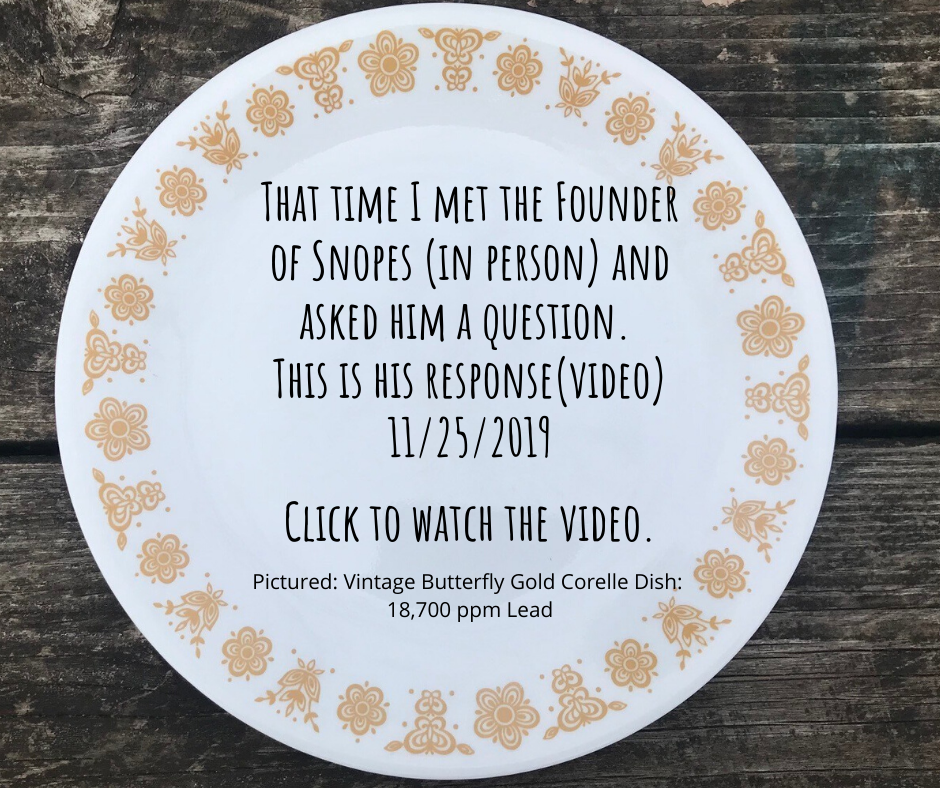David Mikkelson’s response to me on November 25, 2019 when I asked him a question. FYI: He’s the founder of Snopes (video).
Snopes | Snopes video | Video | Videos
This video (of David Mikkelson’s response to me) is five minutes and nine seconds long. The transcript of this conversation will be posted below the video shortly. The video was taken by my friend Carissa. If you did not yet see my question to him, here’s that link with that video.
Transcript of the above video will be posted below shortly.
I have started transcribing it (and will finish a.s.a.p.!):
Note: the audio-quality is very poor and I have done my best to transcribe this word-for-word (including “ums”, etc.)
- David: I don’t know which articles you’re referring, but um we do make corrections of things noted on pages there’s contact information on the site where people can and do send their complaints, corrections [unitelligble] um so I don’t know the specifics…
- Tamara: Can you hear me okay? The specifics are… I found Lead in fidget spinners and that was all over the news (that was on CBS This Morning) and you guys said I was an expert. And then I disproved the myth that there was Lead in Walmart Jelly shoes and you cited my work as an expert having disproven that myth, which was great. But then I also found Lead in vintage Pyrex, and the problem for me is that the Lead levels in vintage Pyrex are 100,000 ppm, 50,000 ppm – quite unsafe – and unsafe for for food use purposes. And as a result of your Snopes article saying that “no – there isn’t an unsafe level of Lead in vintage Pyrex” there’s Pyrex collectors licking the outside of their Pyrex bowls on Facebook not realizing that there’s actually bioavailable Lead that can come off. And they really… they believe in you. And the other one was last year (or earlier this year – in March) I found Lead in vintage Tupperware. And you wrote an article that, when my readers read it they go like “oh well they validated your work” but when other people read it it’s a little twisted – and it’s like is she really doing this or saying this – and it sheds some doubt about my testing methodologies, which are the same methodologies used by the Consumer Product Safety Commission, so completely valid… and it’s hard for me… I just think that we need you to be incredibly accountable in these and there needs to be a way for people who you try to discredit to have a kind of a course of action to say “actually no, the article missed these important points about what you are trying to discredit.” In the same way that you are doing the same things for others.
- 2:16 – David: Um, well – I’ll speak in general – in that type of article (and there’s a lot of what we deal with is warnings that there a lot of articles that there is unsafe levels of something in some type of product). It’s often the case that sometimes that’s true but it’s often the case that say there’s no comparison given so what looks like a high level might actually be something that’s considered safe by regulatory agencies or maybe it’s unsafe but you would have to be using that product in a way that it’s not intended – like you’re eating some non-edible product…
- 3:00 – David: … and ingesting a bunch of something that you shouldn’t be ingesting (and no-one?) expecting you to eat it or you would not be exposed to it at an unsafe level unless like you were using this product 20 hours a day for 100 years or something so in general there’s a lot of warnings that y’know have some truth to them but they y’know what they’re measuring doesn’t present a danger (in normal use?) and I’m not addressing you specifically but there are also people that are doing tests – home testing – different from what the government does, the point is that you cannot take them all at face value. Y’know you see alarmist wording on the internet – oh my gosh – so um again y’know if you want
- 4:10 David: – I can recommend if you think that we misstated something you know contact info on the site – it’s probably that all the articles you are referencing were written by the same person….
- 4:21: Tamara: Four different. Four different people
- 4:24: David: Laughs – So. Um.But. There’s contact info. Did you try emailing them before?
- 4:35: Tamara: Yup
- 4:36: David: You got a response? You got no response? [Tamara shakes head – got no response, David laughs.] Oh my god. We uh have had a problem with kind of our mail processing (unintelligible) need to put someone else in charge of it. You can get contact info from me and get me the relevant info.
Never Miss an Important Article Again!
Join our Email List




I couldn’t really hear much of what he was saying but it sounded like he was saying that there are safe levels of exposure. When in fact the currently accepted public health community stand on lead exposure for children is that there is no safe level of lead for children to be exposed to (CDC, AAP) . Period . In fact regulatory levels only give an “illusion of safety” (as stated by the American Academy of Pediatrics)
the video seems to be unavailable now, but the transcript is. Thanks for what you do!